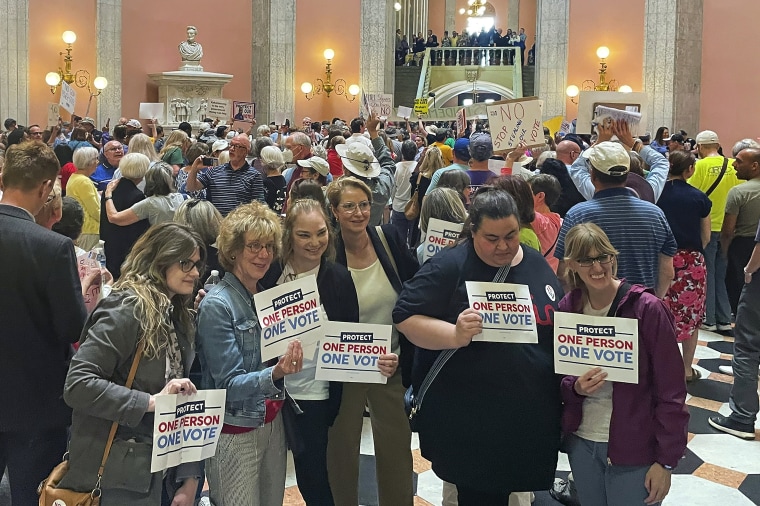The Ohio Supreme Court ruled Friday that an August election scheduled by Republican lawmakers that could make it harder for abortion rights supporters to amend the state constitution can proceed.
The ballot measure in the August election will allow voters to decide whether to raise the threshold of support required for future state constitutional amendments to 60%. Currently, just a majority is needed.
The ruling is a blow to reproductive rights advocates, who had filed suit to have the election nixed. Those advocates pointed to the fact that Ohio Republicans — only earlier this year — had enacted a different law that had effectively scrubbed most special elections in August from the state’s calendar, after officials called them overly expensive, low turnout endeavors that weren’t worth the trouble.
In their suit, reproductive rights advocates questioned why the standards would have changed so quickly and so dramatically. They suggested that Republicans in the state Legislature only reversed themselves on the issue because if the threshold measure is passed in August, it could prevent the approval of a proposed amendment in November to enshrine abortion rights in the state constitution.
But in its 4-3 decision, the conservative majority on the state Supreme Court sided with the GOP lawmakers. The court ruled that the August 8 election is entirely legal and constitutional, and legislators had the freedom and leeway to schedule the race.
The August election will also let voters decide whether groups trying to place ballot measures must obtain signatures from voters in all of Ohio’s 88 counties, instead of the 44 now required.
While the measure does not explicitly mention abortion, abortion-rights groups contend it’s placement and timing are designed to thwart efforts to secure abortion rights in the state.
If the threshold measure passes in August, then the proposed amendment in November to enshrine abortion rights would need 60% of voters to pass. If it fails in August, it would need just a majority.
Last month, Republicans moved to schedule the August election just weeks after reproductive rights groups in the state cleared several key hurdles on their path to get their abortion measure on the ballot in November.
Some Republican supporters — including Ohio’s GOP secretary of state, Frank LaRose — had maintained that holding August special elections isn’t worth the tens of millions of dollars in costs.
“These unnecessary off-cycle elections aren’t good for taxpayers, election officials or the civic health of our state. It’s time for them to go,” LaRose, who has said he’s likely to run for U.S. Senate in 2024, testified during legislative hearings late last year.
But earlier this month, News5 Cleveland, a local Ohio television station, unearthed a clip of LaRose saying in May that the efforts to raise the threshold was “100% about keeping a radical pro-abortion amendment out of our constitution.”
Following that report, LaRose spokesperson Rob Nichols defended his reversal, telling News5 Cleveland and other outlets that the secretary of state had “consistently said we need to elevate the standard for amending our state constitution, whether its health care, minimum wage, casinos or any other special interest agenda.”
Raising the threshold for passage of any future constitutional amendments would mark a major shift in the state’s procedures — the simple majority required to pass a proposed constitutional amendment has been in place in Ohio since 1912.
Meanwhile, the proposed November abortion amendment is designed to counteract Ohio’s “heartbeat bill,” which snapped into place immediately after the Supreme Court overturned Roe v. Wade last summer.
That law bans abortions after about six weeks of pregnancy, with exceptions for the health of the pregnant woman and in cases of ectopic pregnancies. It remains temporarily blocked by a state judge.

